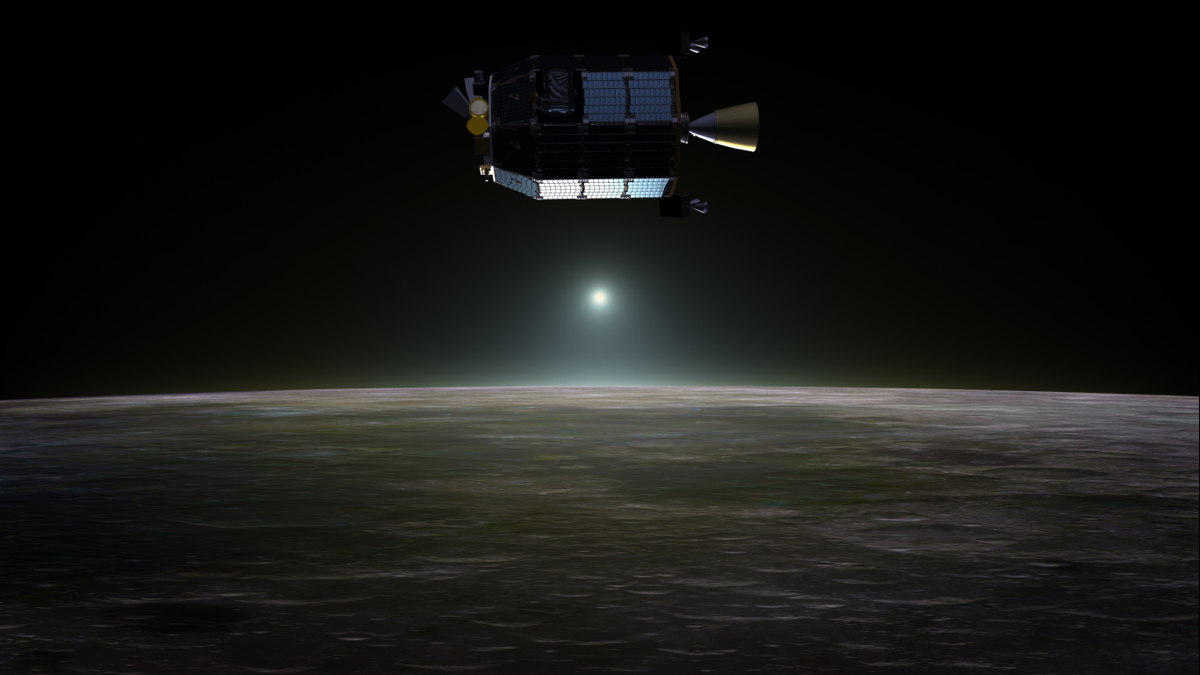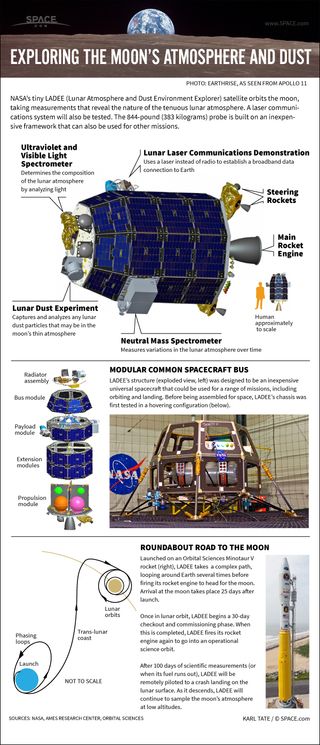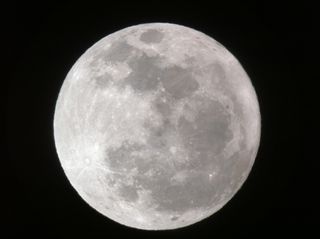NASA Moon Dust Probe Gets Longer Lunar Life

NASA's newest lunar probe now has a longer lease on life, giving it more time to investigate the mysteries of moon dust as it orbits Earth's natural satellite.
Space agency official have granted the LADEE spacecraft (short for Lunar Atmosphere and Dust Environment Explorer) a 28-day mission extension. Scientists will use the additional time to make different measurements of lunar dust in the moon's thin atmosphere from a lower orbit than LADEE has used before, NASA representatives said.
"The science team has already established a baseline of data for the tenuous lunar atmosphere, or exosphere, and dust impacts," Rick Elphic, LADEE project scientist, said in a statement. "One cool thing about this extension is that we plan to fly LADEE at only a few kilometers above the lunar surface. This will be much lower than we’ve been before." [Photos: NASA's LADEE Moon Dust Mission in Pictures]

LADEE launched to the moon on Sept. 6, 2013 on a mission to investigate the nature of moon dust and solve a long-standing mystery dating back to before the Apollo program.
Scientists are trying to uncover what caused a glow Apollo astronauts saw on the lunar horizon before sunrise. Researchers expect that magnetically charged dust in the moon's exosphere is to blame for the unexpected glimmering. However, LADEE is designed to collect more data on the subject.
LADEE started science operation on Nov. 10, 2013 and originally, the couch-sized spacecraft was only expected to conduct 100 days of science around the moon. But the probe has enough fuel to collect another lunar cycle's worth of data before crashing into the moon's surface. LADEE is now expected to impact the moon on April 21 of this year.
"The launch vehicle performance and orbit capture burns using LADEE's onboard engines were extremely accurate, so the spacecraft had significant propellant remaining to enable extra science," Butler Hine, LADEE project manager at NASA Ames in California, said in a statement. "This extension represents a tremendous increase in the amount of science data returned from the mission."
Get the Space.com Newsletter
Breaking space news, the latest updates on rocket launches, skywatching events and more!

LADEE is carrying a set of three instruments to make measurements of the composition of the atmosphere of the moon. One of those, the Lunar Dust Experiment (LDEX) immediately started to record dust impacts once it began collecting data, NASA officials said.
"LDEX occasionally sees an increase in dust impacts due to meteoroid showers, such as the Geminids, and 'dust bursts' that may be due to LADEE flying through plumes kicked up from nearby meteoroid impacts," NASA officials said in an announcement.
Learning more about the moon's thin exosphere could help scientists understand other small bodies in the solar system. Exospheres are the most common kind of known atmosphere in the solar system, NASA scientists have said. Mercury, asteroids and other moons all play host to exospheres.
Follow Miriam Kramer @mirikramer and Google+. Follow us @Spacedotcom, Facebook and Google+. Original article on Space.com.
Join our Space Forums to keep talking space on the latest missions, night sky and more! And if you have a news tip, correction or comment, let us know at: community@space.com.

Miriam Kramer joined Space.com as a Staff Writer in December 2012. Since then, she has floated in weightlessness on a zero-gravity flight, felt the pull of 4-Gs in a trainer aircraft and watched rockets soar into space from Florida and Virginia. She also served as Space.com's lead space entertainment reporter, and enjoys all aspects of space news, astronomy and commercial spaceflight. Miriam has also presented space stories during live interviews with Fox News and other TV and radio outlets. She originally hails from Knoxville, Tennessee where she and her family would take trips to dark spots on the outskirts of town to watch meteor showers every year. She loves to travel and one day hopes to see the northern lights in person. Miriam is currently a space reporter with Axios, writing the Axios Space newsletter. You can follow Miriam on Twitter.











